North Carolina stretches 500 miles east to west from the Atlantic Coast to the Appalachian Mountains. The National Parks in North Carolina include the most popular National Park in the country, the Wright Brothers and the most visited parkway!
From the Great Smoky Mountains to the wonder of flight you can stand in awe of the beauty and innovation within North Carolina National Parks.

Planning a National Park vacation? America the Beautiful/National Park Pass covers entrance fees for an entire year to all US National Park Sites and over 2,000 Federal Recreation Fee Sites.
The park pass covers everyone in the car for per vehicle sites and for up to 4 adults for per-person sites.
Buy on REI.com and REI will donate 10% of pass proceeds to the National Forest Foundation, National Park Foundation and the U.S. Endowment for Forestry & Communities.
Free Entrance Days -Mark your calendars with the five free entrance days the National Park Service offers annually.
North Carolina National Parks
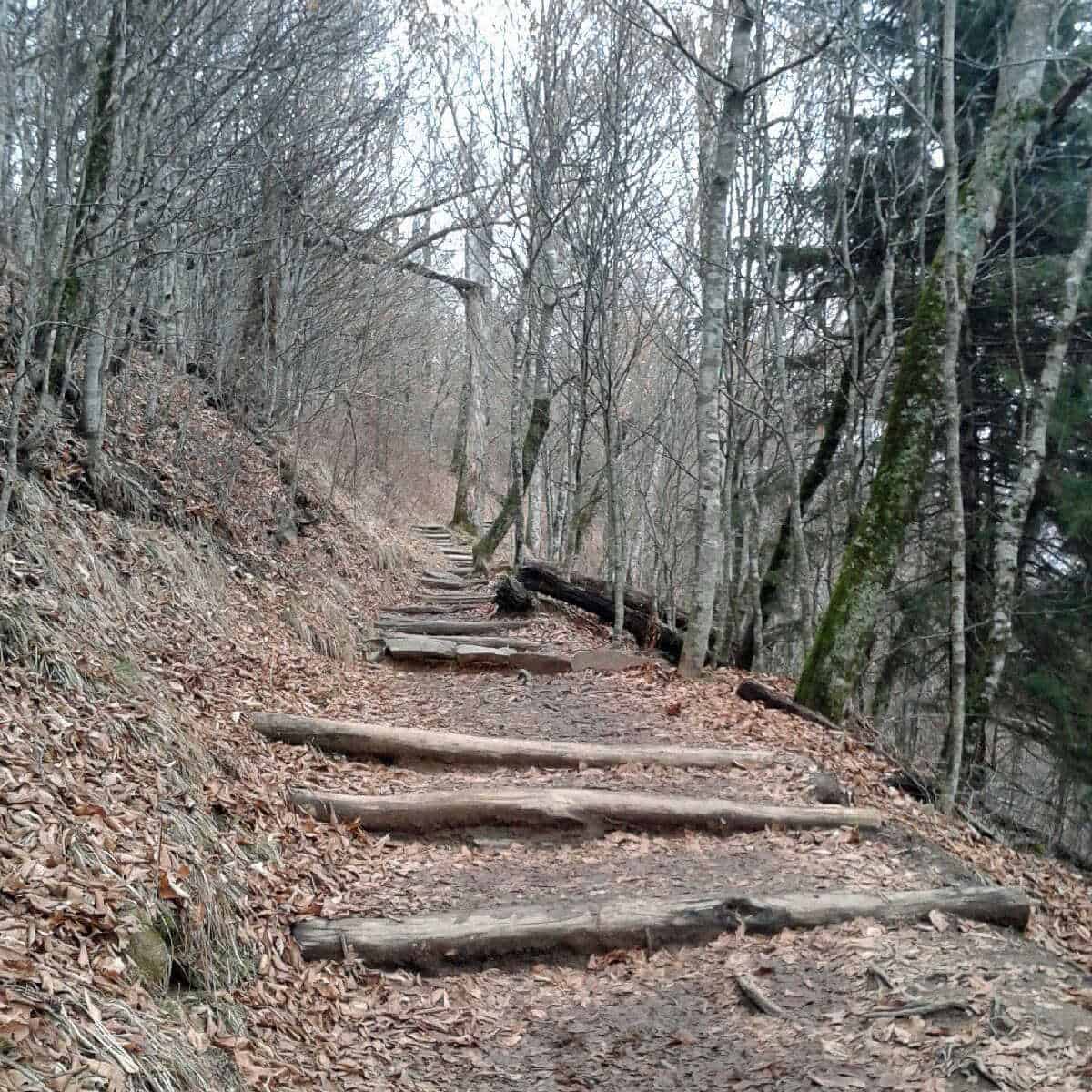
Appalachian National Scenic Trail
Top Things to do -Thru-Hiking, Camping, Enjoy Scenic Views, Cross-Country Skiing, Wildflower Viewing, Bird Watching, Wildlife Viewing. Hike Wesser Bald Fire Tower, New Found, Gap to Charlies Bunion, Mt. Cammerer, Lemon Gap to Max Patch and Lover’s Leap Loop
Lodging - Lodging options along the North Carolina section of the Appalachian Trail include shelters, campsites, hostels, hotels, bed and breakfasts, vacation rentals, and resort lodgings.
Camping - Campground options along the North Carolina section of the Appalachian Trail include backcountry campsites, national park campgrounds, commercial campgrounds in nearby towns, state park campgrounds, and forest service campgrounds. Ensure compliance with park regulations and practice Leave No Trace principles when camping.
Park Address -
Appalachian Trail Park Office
P.O. Box 50
Harpers Ferry 25425
95.7 miles of the Appalachian NST runs through North Carolina. The elevation ranges from 1,725 feet to 5,498 feet. The trail runs along the Tennessee and North Carolina border for 224.7 miles.
If you plan to hike the portion of the trail that passes through Great Smoky Mountains National Park, you will need to get an advance permit and Smoky Mountains National Park Camping reservations.
For additional information, check out the Appalachian Trail Guide to North Carolina and Tennessee.
Blue Ridge Parkway
Top Things to do - Sleep under the stars (camping), Enjoy traditional music from the Southern Appalachians, Hiking, Picnicking, Capture an amazing photo, Auto Touring, Bicycling, Fishing, Winter Recreation, Fishing, Bird Watching, Wildlife Viewing.
Lodging - Two lodges on the parkway provide overnight accommodations from spring through the fall.
Camping - Eight campgrounds are open from May through October along the parkway.
Park Address - Milepost 384, Asheville, NC 28803
The Blue Ridge Parkway is located in Western North Carolina and western Virginia. The parkway runs for 469 miles between the Great Smoky Mountains National Park to Shenandoah National Park along the Blue Ridge Mountains.
Blue Ridge Parkway is one of the most visited National Parks in the country. Its top speed limit is 45mph, so you can enjoy the ride through the mountains of the eastern Appalachians.
If you want to get out of the car and explore more, there are many short hiking trails off of the parkway.
The National Park Service has a visitor center in Asheville, North Carolina that offers interpretive programs and exhibits. Nine campgrounds along the parkway are open seasonally.
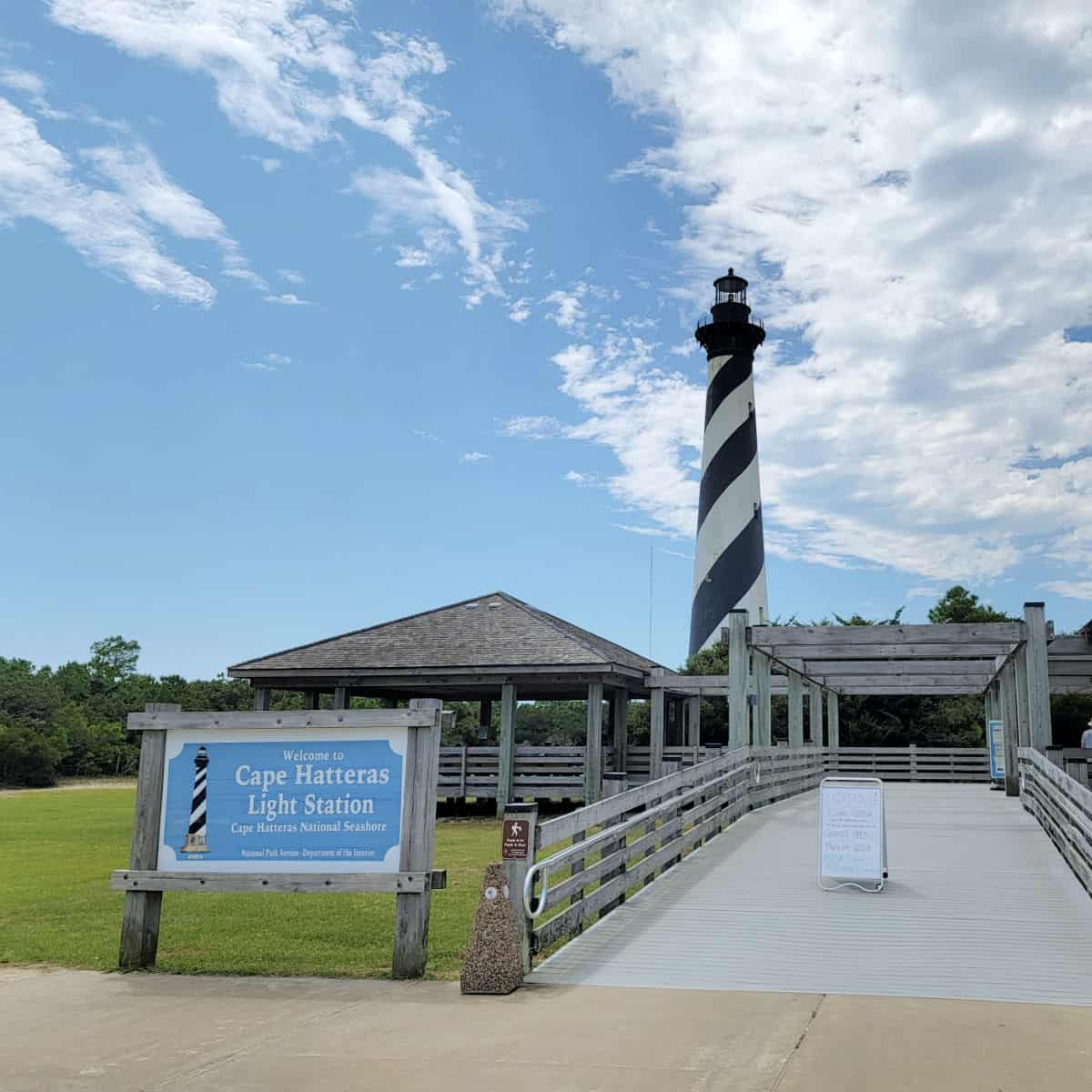
Cape Hatteras National Seashore
Top Things to do - Beach Activities Along Cape Hatteras National Seashore, Fishing, Hiking, climb the 214-step Bodie Island Lighthouse, visit the Ocracoke Island Lighthouse, try to see the wild horses, Nature Viewing, Photography, Swimming, Crabbing, Windsurfing, Kiteboarding, Surfing, Kayaking and Canoeing
Lodging - There are no traditional lodging available within the seashore.
Camping - There are four NPS-operated campgrounds along the seashore.
Park Address - 46375 Lighthouse Road, Cape Hatteras Light Station, Buxton, NC 27920
Cape Hatteras National Seashore is located in Eastern North Carolina, approximately 85 miles south of Norfolk. The park is open year-round and offers swimming, camping, bird-watching, windsurfing, and more.
Cape Hatteras NS was established in 1953 as the first national seashore in the United States. The seashore stretches for 70 miles along the Outer Banks. The National Seashore was created to protect and preserve parts of three barrier islands - Bodie, Hatteras, and Ocracoke Islands.
The Cape Hatteras Lighthouse was built in 1870 and is the tallest brick lighthouse in the country at 208 feet. The lighthouse was moved 2,900 feet inland in 1999 to protect it. Today, you can climb the 248 stairs to the top. There is a visitor center next to the lighthouse.
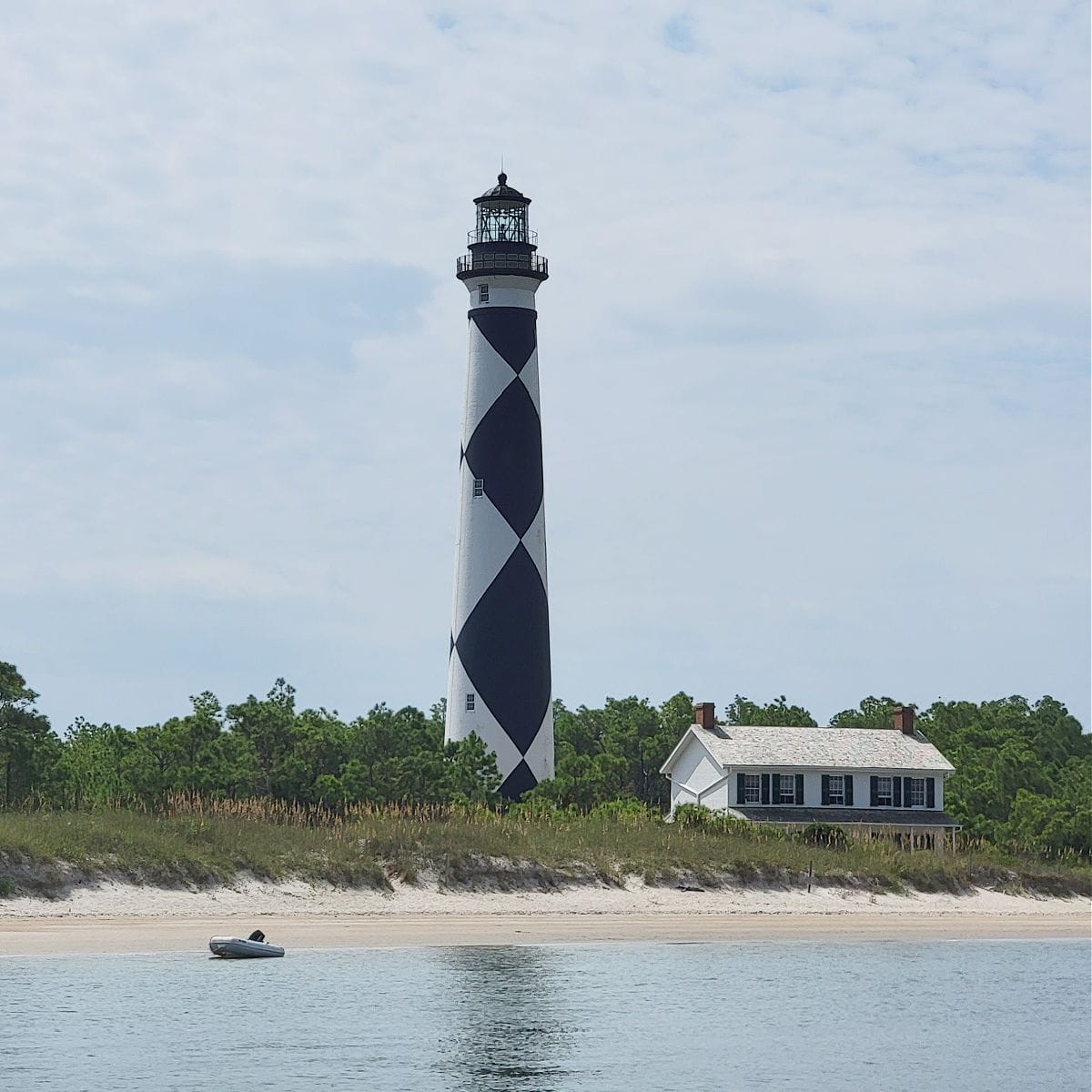
Cape Lookout National Seashore
Top Things to do - Beach Driving, Birding, Boating, Camping, Fishing, Hiking, Horse Watching along the Shackleford Banks, Hunting,. Kayaking, Canoeing, Shelling, Swimming, Windsurfing, Ranger Programs, Lighthouse Climbs, Audio Tours, Guided Tours
Lodging - The rustic, wooden cabins at Long Point and Great Island offer beachfront views of the pristine, undeveloped barrier islands of Cape Lookout National Seashore. The cabin camps can only be reached by boat, adding an element of both privacy and adventure.
Camping - Camping is permitted on the majority of Cape Lookout National Seashore's barrier islands.
Park Address - 1800 Island Rd. Harkers Island, NC 28531
Cape Lookout National Seashore is located in Eastern North Carolina, approximately 160 miles southeast of Raleigh. The park offers the opportunity to explore the beach, primitive camping and tour a historic lighthouse.
Cape Lookout NS is located south of Cape Hatteras, NS, and offers a similar beach experience. Cape Lookout can only be reached via commercial ferry or private boats. Except for a small area near the ferry landings the islands are undeveloped with no paved roads.
Cape Lookout Lighthouse was built in 1859. In the summer, Park Rangers provide seasonal interpretive programs about the lighthouse and its outer banks.
Carl Sandburg Home National Historic Site
Top Things to do - Tour the Sandburg Home, Visit Connemara Farms, Enjoy the solitude of Connemara (Hiking), Seasonal Programs and Special Events
Lodging - The Carl Sandburg Home National Historic Site does not have lodging options on the site itself. Visitors to the historic site have several lodging options in the nearby areas, including Hendersonville.
Camping - There are no campgrounds within the park
Park Address - 81 Carl Sandburg Lane, Flat Rock, NC 28731
Carl Sandburg Home NHS is located in Southwestern North Carolina, approximately 25 miles southeast of Asheville in the town of Flat Rock. The park is open year-round and offers the opportunity to tour Sandburg's home.
Carl Sandburg was born in 1878 in Illinois. He dedicated his life to writing and celebrating American History and life. Mr. Sandburg won Pulitzer Prizes for both poetry and his biography of Abraham Lincoln.
Carl Sandburg and his wife Paula purchased this home and property in 1945. Paula Sandburg wanted a space to raise her prize-winning dairy goats.
Today, visitors can take a guided tour of Sandburg's home, including seeing his extensive library and personal items.
The National Park Service has a small herd of goats on the property. They have interpretive demonstrations of milking and cheese-making seasonally.

Fort Raleigh National Historic Site
Top Things to do - See the 1896 Monument, Freedom Trail, Thomas Hariot Trail, Be a Junior Ranger, Fishing
Lodging - There are no lodging options within the site Fort Raleigh National Historic Site
Camping - No campgrounds are available within
Park Address - 1500 Fort Raleigh Road, Manteo 27954
Fort Raleigh NHS is located in Eastern North Carolina, approximately 90 miles south of Norfolk. The park is open year-round and offers the opportunity to tour an early English colony.
During the late 16th century the first two English attempts to colonize North America occurred on Roanoke Island. Both of these attempts were led by Sir Walter Raleigh.
In 1585 the first colony encountered difficulties and returned to England. A 2nd attempt was undertaken in 1587. This attempt again met with immediate problems.
Sir Walter Raleigh returned to England for help. 117 colonists stayed on Roanoke Island, including Sir Walter Raleigh's granddaughter Virginia Dare. She was the first child of English parents born in the New World.
Sir Walter Raleigh was delayed from returning for three years due to the war with Spain. When he did return to the island in 1590 he found the settlement abandoned. There was a pole with the word "Croatoan" carved into it.
The fate of the colony is still a mystery. The colony is now called the Lost Colony.
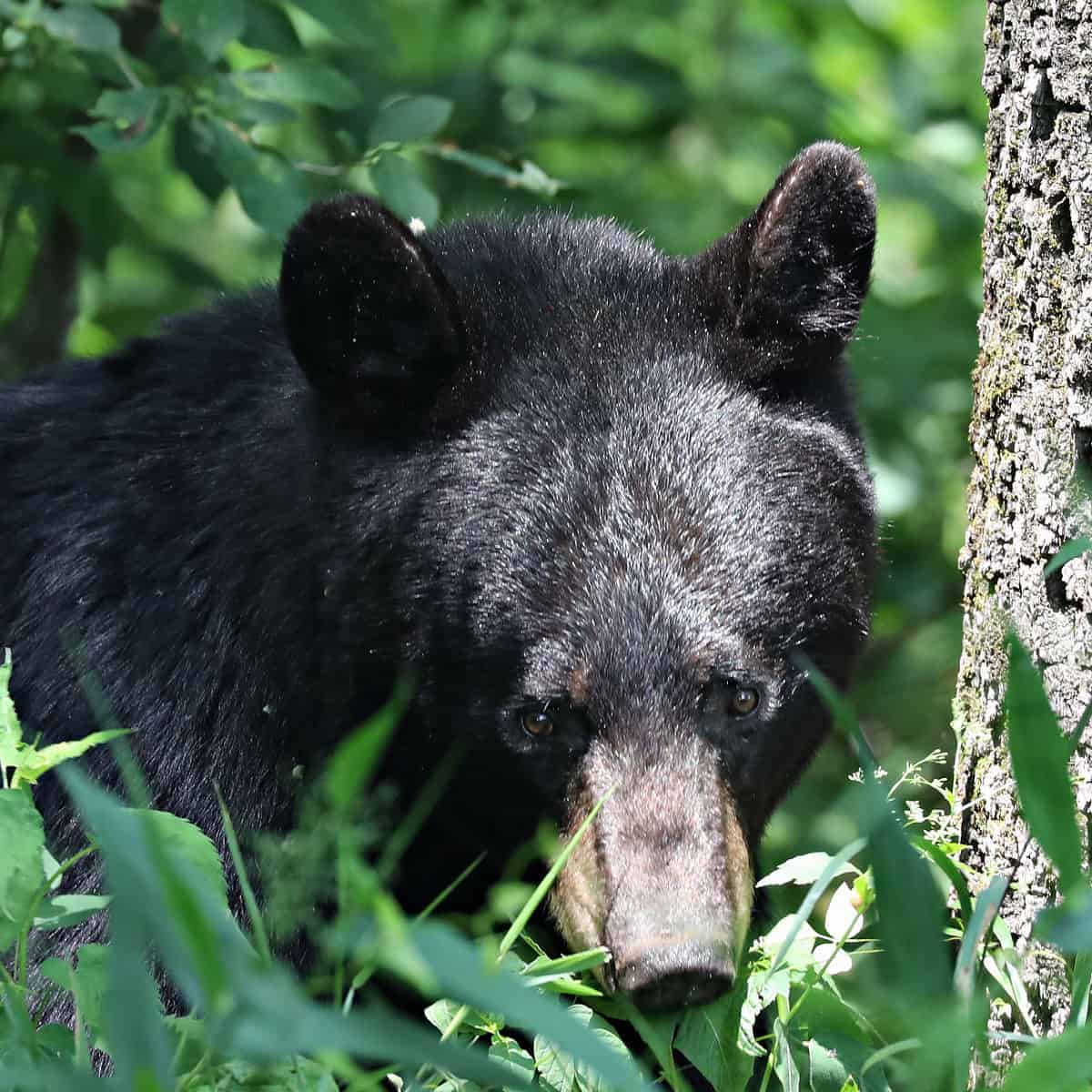
Great Smoky Mountains National Park
Top Things to do - Wildflower Viewing, Hiking, Fishing, having a picnic in one of the picnic areas, bike the Cades Cove road on Wednesdays from May through September, Wildlife Viewing, Bicycling, touring Cades Cove, Camping in the Smokies, Burial Landscapes, Horseback Riding, See Historic Buildings
Lodging - There are no motels or rental cabins located within the national park other than LeConte Lodge.
Camping - You can choose from 10 front country campgrounds or head into the backcountry.
Park Address - 107 Park Headquarters Road, Gatlinburg, TN 37738
Great Smoky Mountains National Park is the most visited national park and is located in western North Carolina and eastern Tennessee. The park is open year-round and offers amazing wildlife viewing, hiking, camping, scenic driving, and much more.
The park has an unbelievable amount of biodiversity within its 814 square miles, from watching black bears in Cade Cove to being lucky in the annual lottery and seeing the Synchronous Fireflies.
You can spend weeks exploring the park and still find something new during your next visit.
Guilford Courthouse National Military Park
Top Things to do - Cellphone Tour, Vist the Cannons at Tour Stop 6, Drive on the Tour Road, Tour the Battlefield on foot, See actual artifacts recovered from the battleground, check out Don Troiani Gallery, Be a Junior Ranger & Not So Junior Ranger.
Lodging - There are no lodging options within Guilford Courthouse National Military Park
Camping - There are no public campgrounds in the park
Park Address - 2332 New Garden Road, Greensboro, NC 27410
Guilford Courthouse NMP is located in North-central North Carolina in the city of Greensboro. The park is open Spring through Fall and offers the opportunity to explore a Revolutionary War battlefield.
British troops were sent south in 1778 to move northward from Georgia, hoping to regain control of the colonies. In March 1781, a battle took place in Guilford Courthouse, North Carolina.
The 1,900 British troops led by General Lord Cornwallis battled against 4,500 Patriot troops led by Major General Nathanael Greene. A brief but intense battle ended with the Patriot troops retreating.
The British troops continued north to Virginia until they were forced to surrender to George Washington at Yorktown.
Visitors can take a battlefield road tour with eight interpretive stops, including an equestrian statue of Nathanael Greene. There are also 2.5 miles of battlefield walking trails.
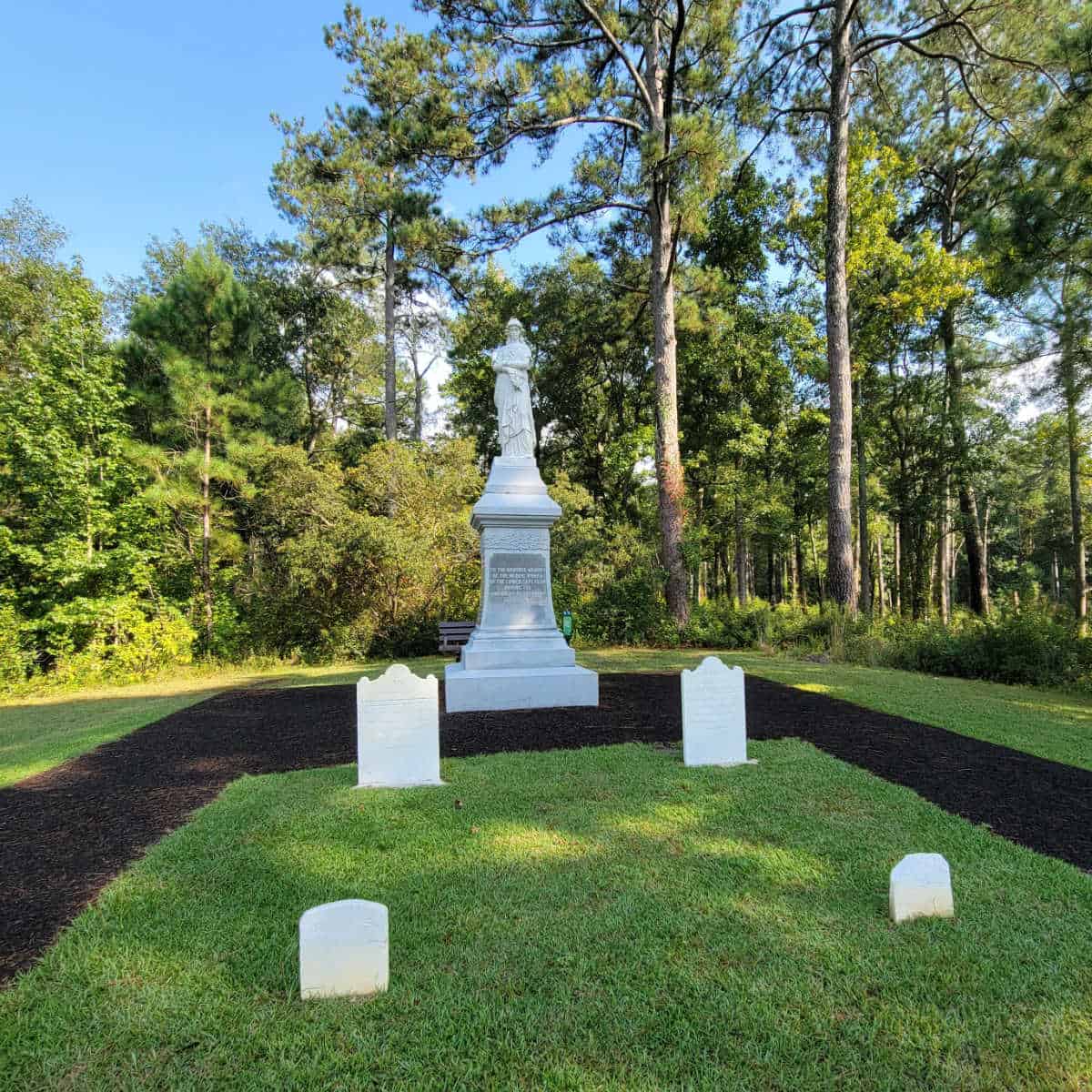
Moores Creek National Battlefield
Top Things to do - Candlelight Tour, Join Anniversary Event, Experience History, Bird Watching, Participate in Get Fit at Moores Creek, Fishing, Picnicking
Lodging -. While there are no lodging options within the park itself, you can find several lodging choices in the nearby towns. The closest town with lodging options is Wilmington, which is about a 20-30 minute drive from the battlefield.
Camping - There are no National Park Campgrounds within the park.
Park Address - 40 Patriots Hall Dr. Currie, NC 28435
Moores Creek, NB, is located in southeastern North Carolina, approximately 20 miles from Wilmington. The park is open year-round and offers the opportunity to visit a historic battlefield.
During the American Revolution, the residents of North Carolina were divided in their loyalties. February 2, 1776, a group of Loyalists on their way to meet British troops on the Atlantic coast tried to cross a bridge at "Widow Moore's Creek." The Patriot force was waiting and had removed the bridge planks and greased the support girders.
When the Loyalists tried to cross the bridge, they were met with artillery fire and musket fire from the Patriot troops. The Loyalists suffered devastating losses and quickly retreated. This victory discouraged Loyalists throughout the colonies and inspired a more revolutionary spirit.
Today, visitors can check out the visitor center, which has interpretive exhibits and a park film, and explore the .7-mile history trail, which follows part of the road used by Loyalist and Patriot troops.
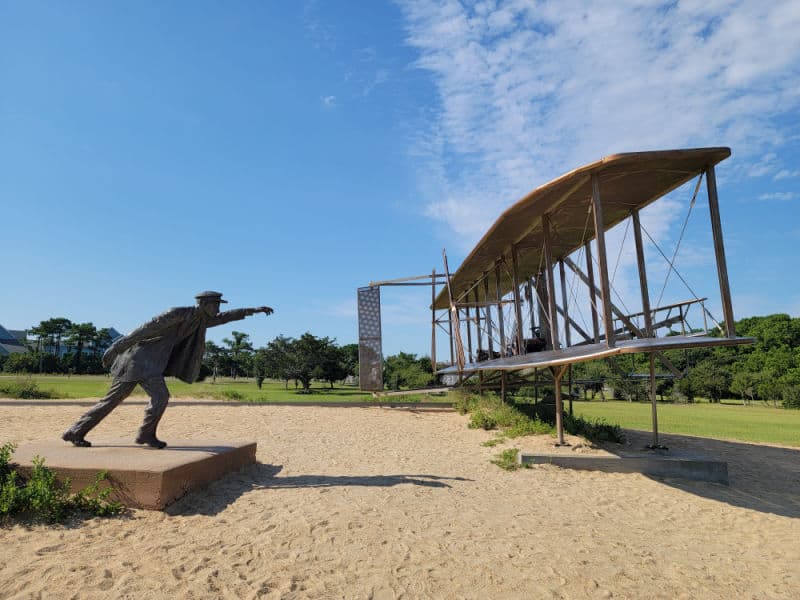
Wright Brothers National Memorial
Top Things to do - Start your visit at the visitor center, Reconstructed 1903 Camp Buildings, First Flight Boulder & Flight Line, December 17, 1903 Sculpture
Lodging - There are no National Park Lodges within the park.
Camping - There are no camping opportunities within Wright Brothers National Memorial
Park Address - 1000 North Croatan Highway, Kill Devil Hills 27948
Wright Brothers National Memorial is located in Northeastern North Carolina, approximately 90 miles south of Norfolk. The park is open year-round and offers the opportunity to visit a museum and learn about the paths of the first flights.
Wilbur and Orville Wright were bicycle mechanics from Dayton, Ohio, in 1900. They owned a company that manufactured and repaired bikes. They had a dream of trying to fly and began looking for a place to experiment with flying.
They chose a location on North Carolina's Outer Banks due to the steady winds and little vegetation that could get in the way. The tall dunes provided a location to launch a glider, and sand promised a soft landing.
In 1903, the Wright brothers succeeded in their first sustained powered flight in a heavier-than-air machine. This started the age of flight.
The Wright Brothers National Memorial celebrates this achievement, including a 60-foot pylon standing on Big Kill Devil Hill, the hill where the Wright brothers launched their glider.
The park visitor center has interpretive exhibits, including a functional reproduction of the 1903 Flyer. Reconstructions of the hangar and living quarters the Wright Brothers lived in during their time in North Carolina are also on display.
For a fun adventure, check out Escape Campervans. These campervans have built-in beds, kitchen area with refrigerators, and more. You can have them fully set up with kitchen supplies, bedding, and other fun extras. They are painted with epic designs you can't miss!
Escape Campervans has offices in Vancouver, Seattle, Portland, San Francisco, Las Vegas, Los Angeles, Phoenix, Salt Lake City, Denver, Chicago, New York, and Orlando
List of North Carolina National Parks
- Appalachian National Scenic Trail (Georgia to Maine)
- Blue Ridge Parkway (also Virginia)
- Cape Hatteras National Seashore
- Cape Lookout National Seashore
- Carl Sandburg Home National Historic Site
- Fort Raleigh National Historic Site
- Great Smoky Mountains National Park (NC, TN)
- Guilford Courthouse National Military Park
- Moores Creek National Battlefield
- Wright Brothers National Memorial
Affiliated Areas
- Blue Ridge National Heritage Area
- Gullah/Geechee Cultural Heritage Corridor (FL, GA, NC, SC)
- Overmountain Victory National Historic Trail (NC, SC, TN, VA)
- Trail of Tears National Historic Trail (AL, AR, GA, IL, KY, MO, NC, OK, TN)
There are 10 National Parks in North Carolina with over 18 million visitors a year. These visitors produce over 1.2 billion in economic benefits through tourism.
North Carolina National Parks include 2 National Heritage Areas, 2 Wild and Scenic Rivers managed by the National Park Service, 3 National Trails and 2,944 National Register of Historic Place listings.
National Parks in North Carolina also include 1 World Heritage Site (check out this list of all of the UNESCO World Heritage Sites in the United States), 569 places recorded by the Heritage Documentation Program and there are over 2.6 million pieces in the North Carolina National Park Museum Collection along with 600 archeological sites.
Learn more about National Park Passes for parks that have an entrance fee.
$80.00 - For the America the Beautiful/National Park Pass. The pass covers entrance fees to all US National Park Sites and over 2,000 Federal Recreation Fee Sites for an entire year and covers everyone in the car for per-vehicle sites and up to 4 adults for per-person sites.
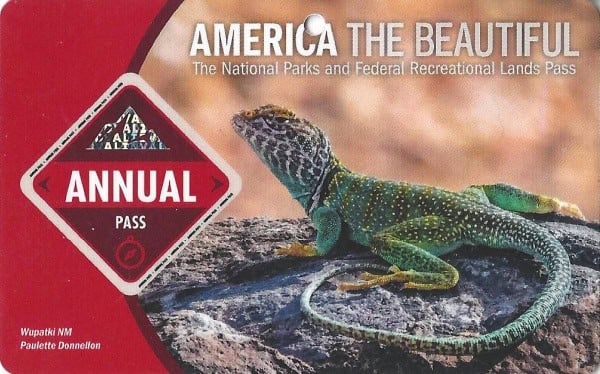
Buy your pass at this link, and REI will donate 10% of pass proceeds to the National Forest Foundation, National Park Foundation, and the U.S. Endowment for Forestry & Communities.
National Park Free Entrance Days -Mark your calendars with the five free entrance days the National Park Service offers annually.

For a fun adventure check out Escape Campervans. These campervans have built in beds, kitchen area with refrigerators, and more. You can have them fully set up with kitchen supplies, bedding, and other fun extras. They are painted with epic designs you can't miss!
Escape Campervans has offices in Vancouver, Seattle, Portland, San Francisco, Las Vegas, Los Angeles, Phoenix, Salt Lake City, Denver, New York, and Orlando
National Parks in neighboring states
National Parks in South Carolina
Check out this list of US National Parks in Alphabetical Order to check out how many you have visited.
Make sure to follow Park Ranger John on Facebook, Instagram, Pinterest, and TikTok
